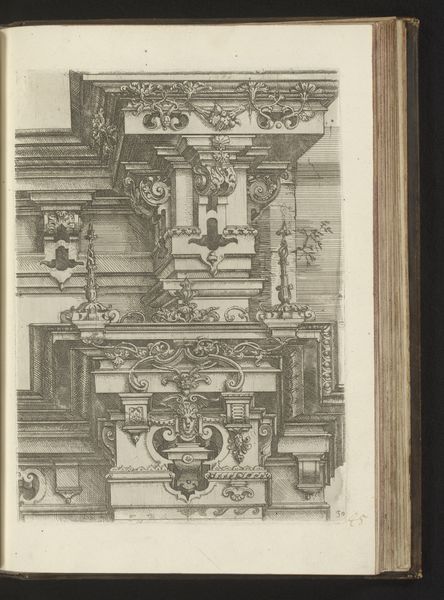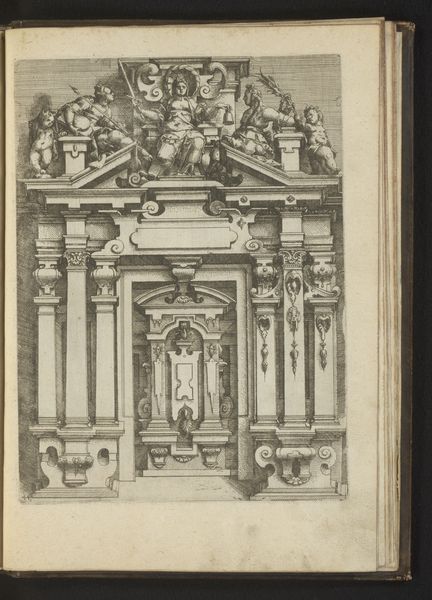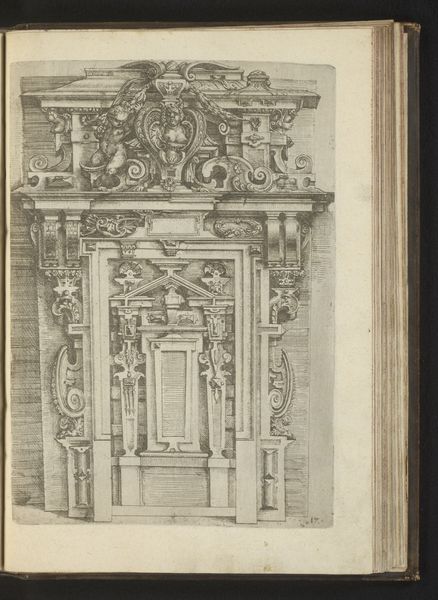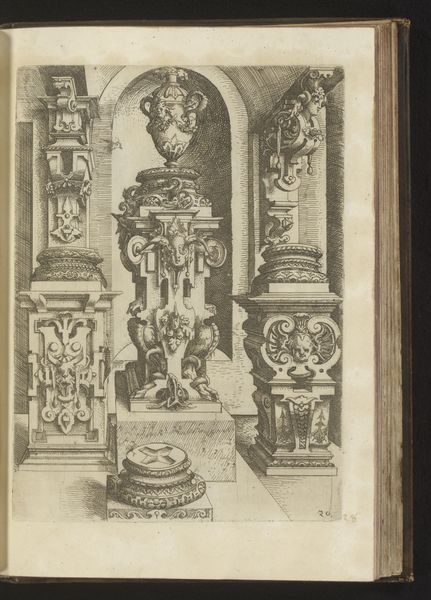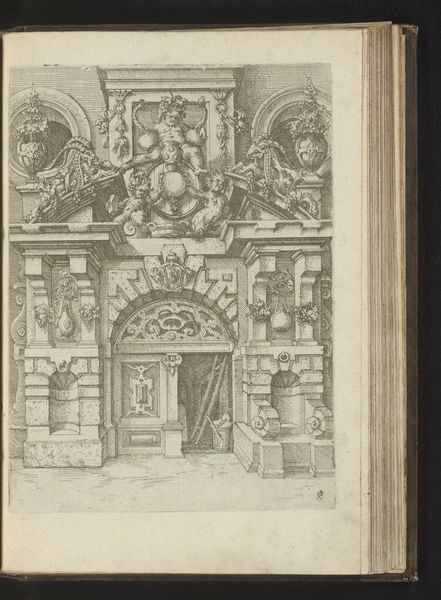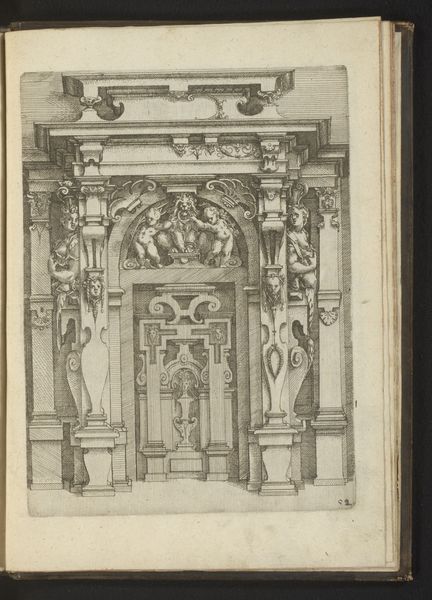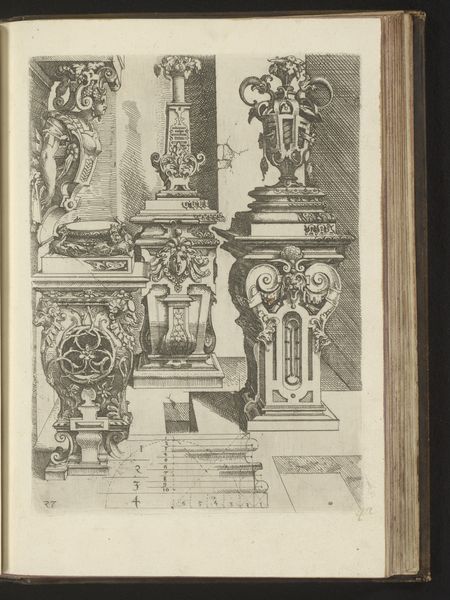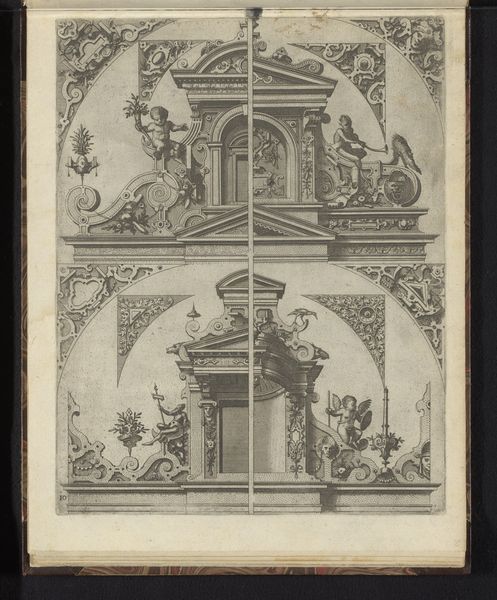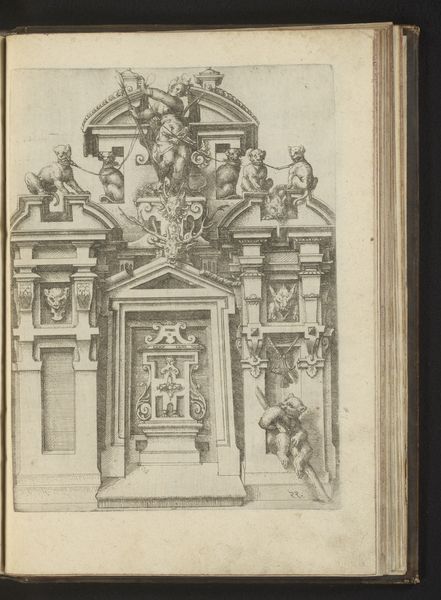
Drie composiete hoofdgestellen met twee bekroningen en gedecoreerd met bladranken, voluten en een mascaron 1593 - 1595
0:00
0:00
Dimensions: height 250 mm, width 185 mm
Copyright: Rijks Museum: Open Domain
Wendel Dietterlin, a German artist, created this print of composite head-dresses with pen and brown ink in the late 16th century. This image comes from his larger treatise on architecture, “Architectura”. Dietterlin was fascinated by the Classical orders – Doric, Ionic, and Corinthian – and wanted to expand the possibilities of their application beyond what was considered standard practice. As you can see here, he experimented with combinations of elements, and with ornamentation like foliage, volutes, and mascarons. In 16th-century Germany, with the rise of powerful banking families like the Fuggers, architecture was a key way to demonstrate wealth, taste, and power. Dietterlin’s designs, though often impractical, served as inspiration for architects looking to make a statement. By studying architectural treatises of the time, as well as the built environment that they influenced, we gain a better understanding of the social and political forces that shaped artistic production during the Renaissance.
Comments
No comments
Be the first to comment and join the conversation on the ultimate creative platform.
